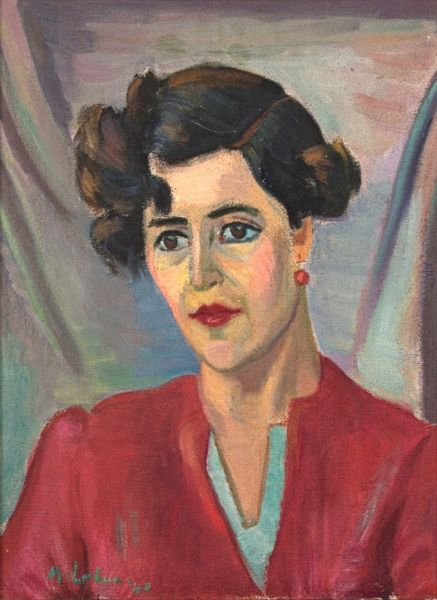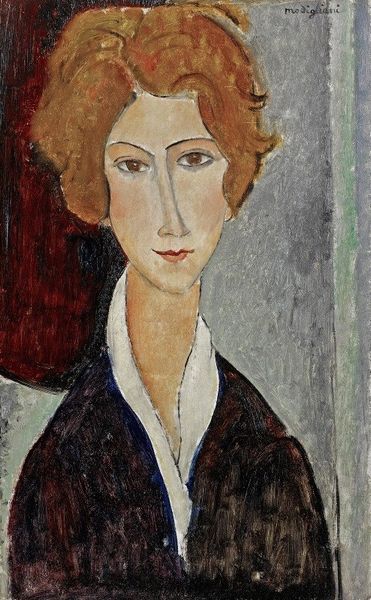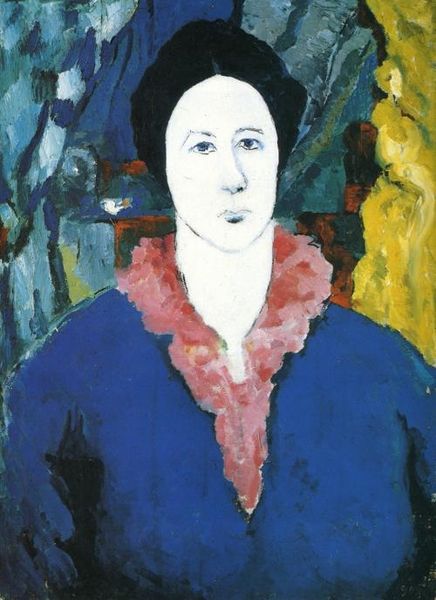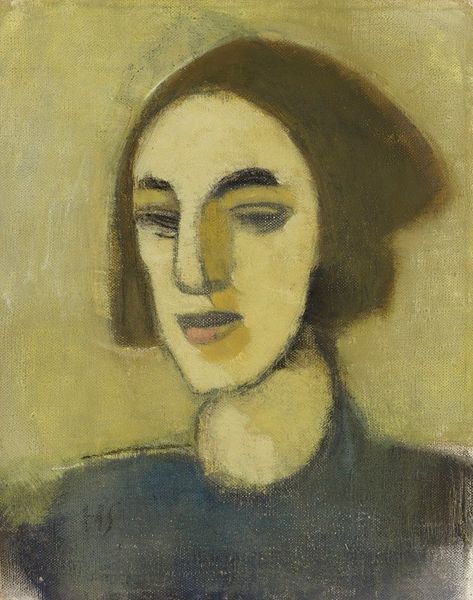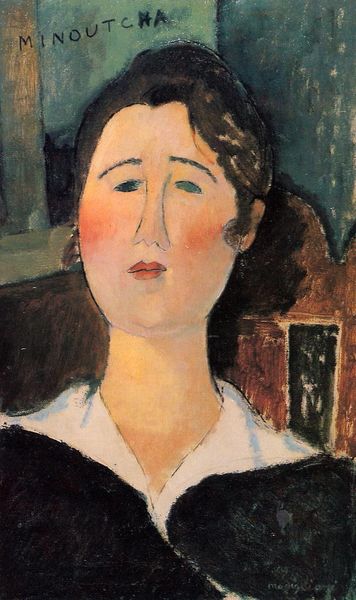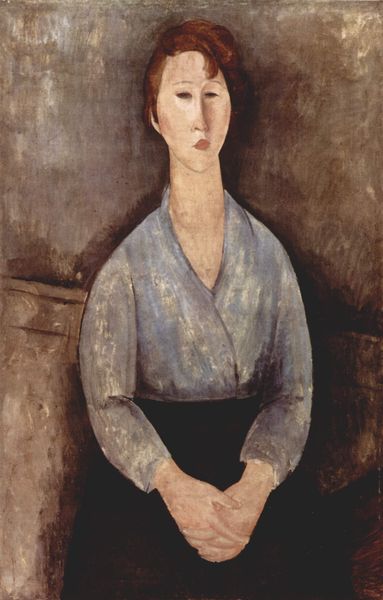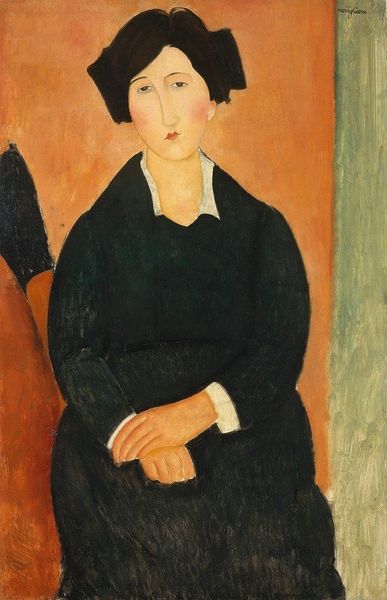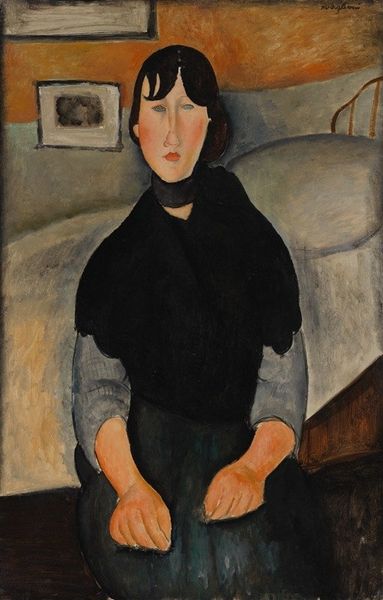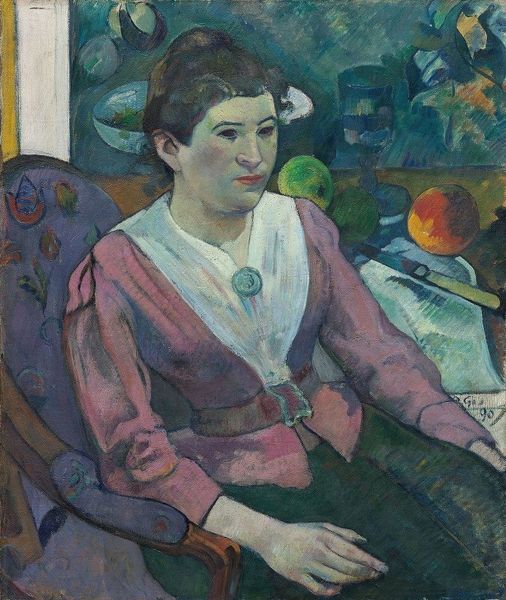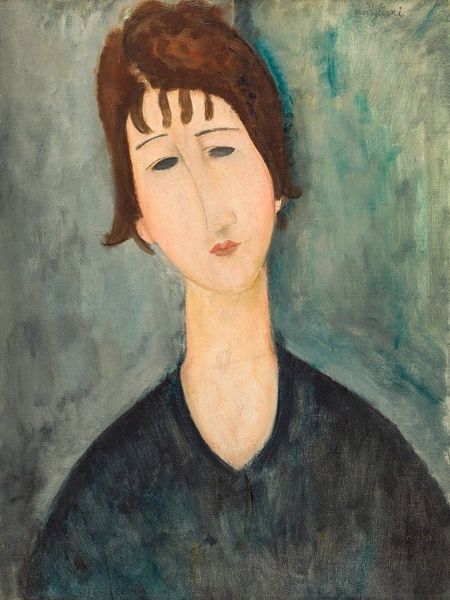
oil-paint
#
portrait
#
oil-paint
#
figuration
#
oil painting
#
geometric
#
modernism
Copyright: Georgi Kovachev,Fair Use
Editor: Here we have Georgi Kovachev’s "Portrait of Mana Parpulova" from 1963, created with oil paint. I’m really struck by how the figure feels both present and slightly distanced, like she's observing from behind a veil. What is your take on this piece? Curator: I find Kovachev’s portrait compelling precisely because it navigates the tensions between individual expression and social expectations prevalent in socialist Bulgaria during the 1960s. Note how the geometric shapes in the background hint at modernism, yet the realistic rendering of Mana’s face grounds it in a representational tradition that was favored by the state. Editor: So, is it a commentary on artistic freedom within a structured society? Curator: Potentially. Consider that portraiture during this period often served a dual purpose: celebrating the individual while simultaneously reinforcing collective ideals. The formal attire and the subject’s composed demeanor could be read as an endorsement of social conformity, while the subtle modernist elements might represent a quiet rebellion against strict artistic doctrines. Do you think this is the case? Editor: It's an interesting point. I hadn’t considered how the artistic climate of the time would influence such a personal piece. Curator: It highlights the complexity of interpreting art from a specific historical context. Works like these offer invaluable insight into the negotiated spaces artists occupied. Editor: I’m definitely seeing this artwork differently now. Thanks for pointing out how the background, style and political environment of Bulgaria have something to say! Curator: My pleasure. Considering art’s connection to society deepens our understanding and appreciation of it.
Comments
No comments
Be the first to comment and join the conversation on the ultimate creative platform.

